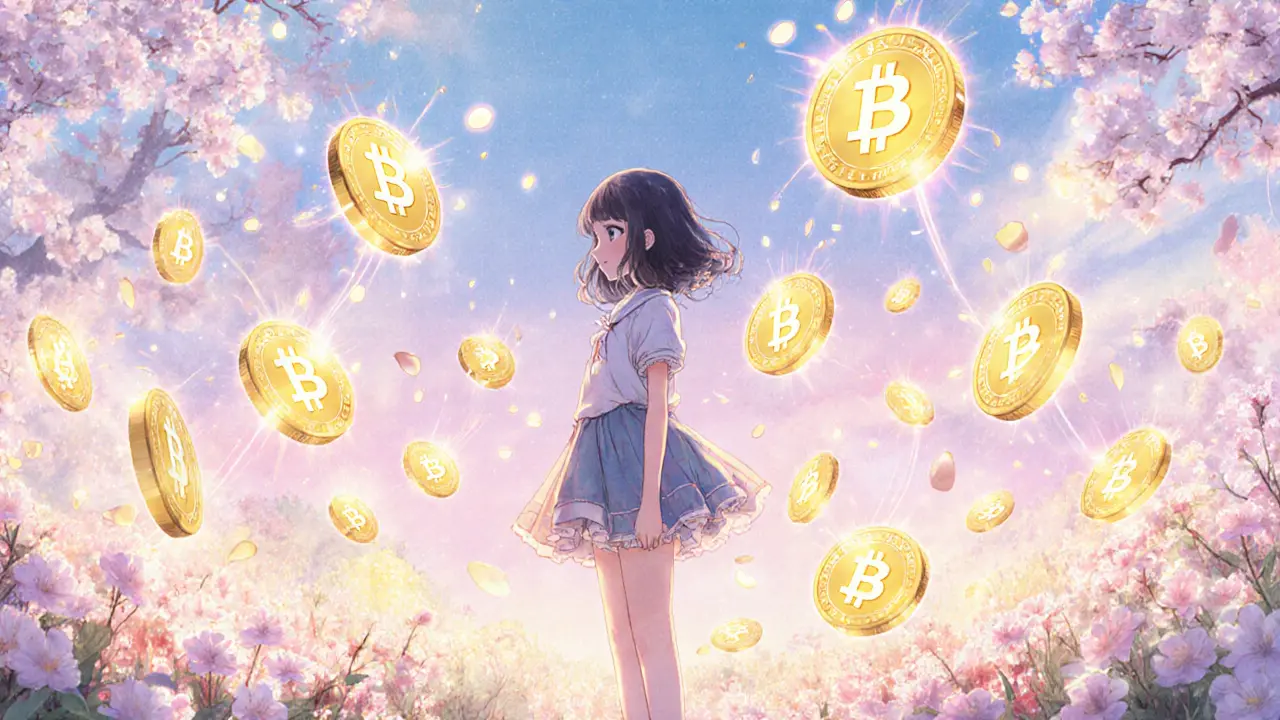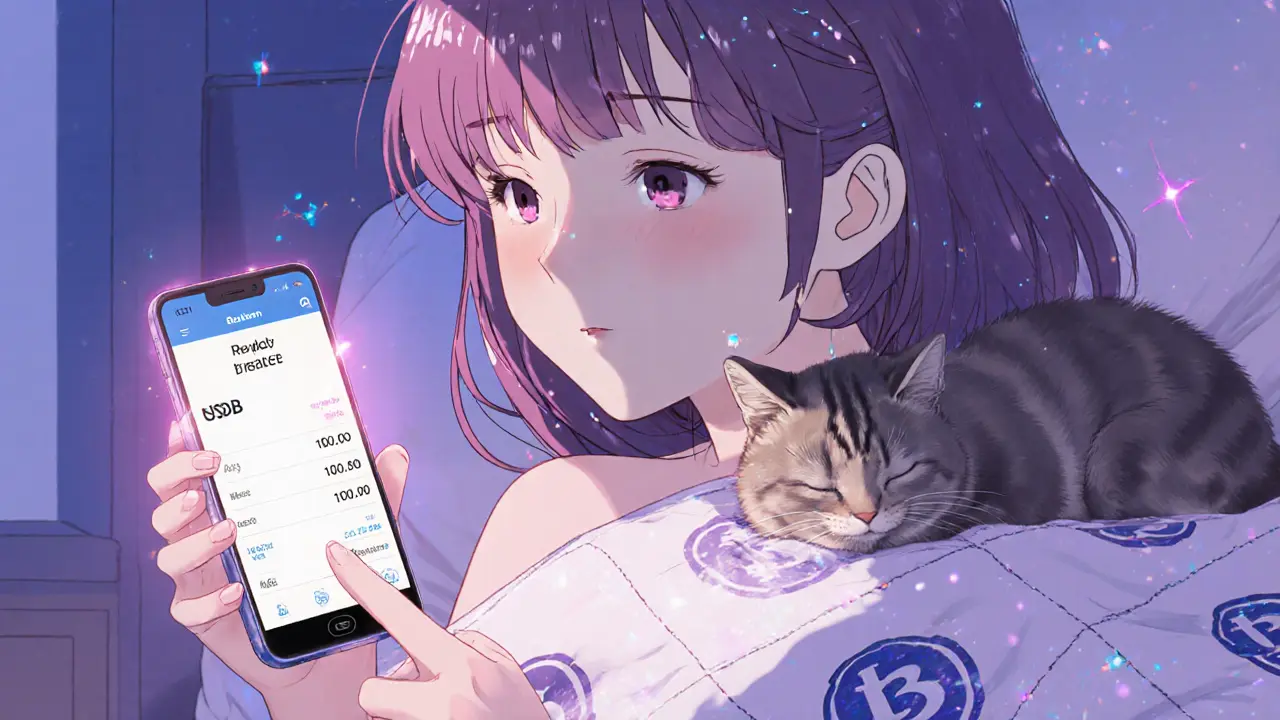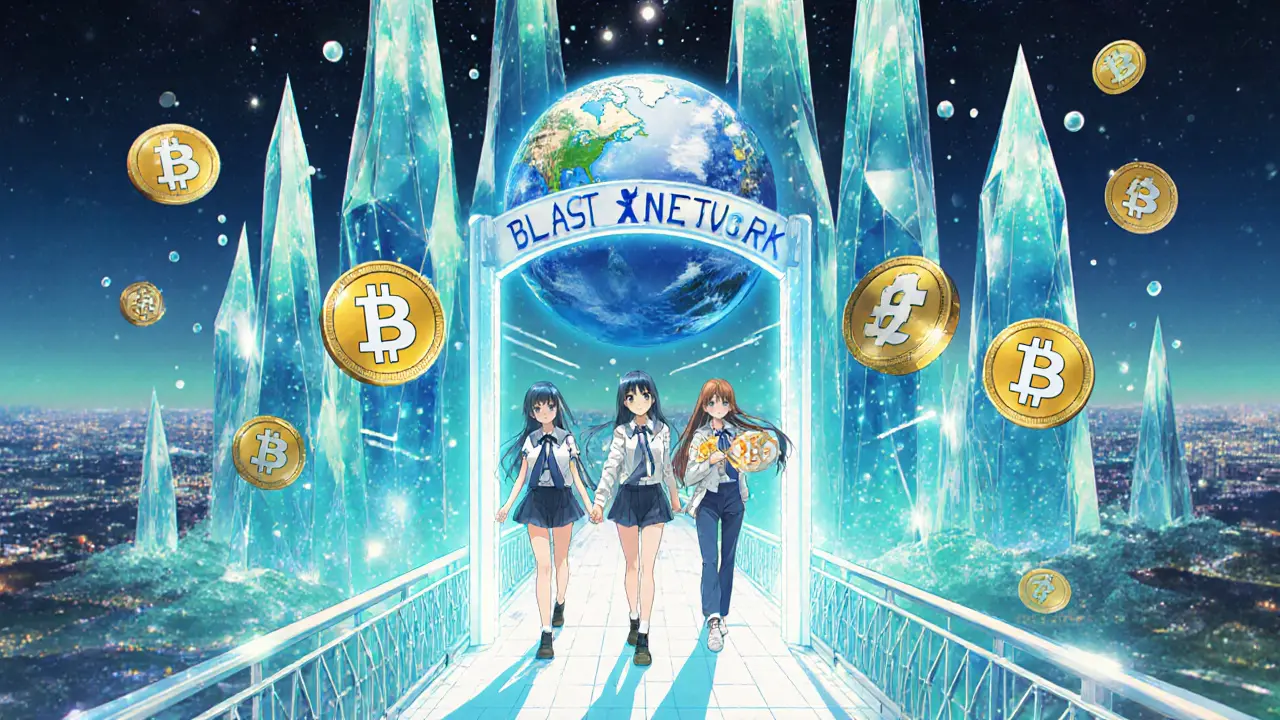What is USDB (USDB) Crypto Coin? A Practical Guide to the Blast Network's Yield-Bearing Stablecoin

USDB Yield Calculator
USDB Yield Estimator
Important Notes:
USDB yield is generated through self-rebasing mechanism. Your balance increases daily without staking. Current estimated yield is 4-5% APY based on Blast Network activity. Actual yield may vary due to network demand and token supply adjustments.
Most people think stablecoins are just digital dollars that sit still-no gains, no surprises. But USDB breaks that mold. It’s not just pegged to the US dollar; it pays you just for holding it. If you’ve heard of USDC or USDT and wondered if there’s something better, USDB might be the answer-if you’re inside the right ecosystem.
What Exactly Is USDB?
USDB is a stablecoin built for the Blast Network, an Ethereum Layer 2 blockchain designed to make crypto faster and cheaper. Unlike traditional stablecoins that just hold your dollars, USDB automatically increases your balance over time-no staking, no locking, no extra steps. That’s because it’s a self-rebasing token. Every day, the total supply of USDB adjusts slightly based on market demand. If the price dips below $1, the supply shrinks. If it rises above $1, the supply grows. Your wallet balance changes with it, so you see small daily increases-like interest, but built into the coin itself.
It’s not magic. It’s code. And it only works inside the Blast ecosystem. You can’t buy USDB on Coinbase or Binance. You need to bridge your USDC, USDT, or DAI from Ethereum mainnet over to Blast. Once you do, those tokens get swapped for an equal amount of USDB. You can always reverse the process and get your original stablecoin back.
How Does USDB Generate Yield?
Here’s the trick: USDB doesn’t pay yield like a savings account. Instead, it changes your balance. If you hold 100 USDB today, you might wake up tomorrow with 100.01. A week later, 100.07. That’s not a bonus deposit-it’s the protocol adjusting the supply to keep the peg at $1. Over a year, those tiny changes add up. Users on the Blast Discord and Reddit have reported consistent 4% to 5% annual returns just from holding.
This is different from staking USDC on a DeFi platform, where you lock up your coins and risk smart contract bugs. With USDB, your coins stay in your wallet. You never have to approve a contract or click ‘stake.’ The yield is automatic, and it’s baked into the token’s design.
There’s also a version called nrUSDB-non-rebasing USDB. It’s a wrapped version that doesn’t change. If you want to use USDB in a DeFi app that doesn’t handle changing balances (like some lending platforms), you convert your USDB to nrUSDB. It’s the same value, just frozen. Later, you can unwrap it back to USDB and resume earning.
Is USDB Backed by Bitcoin?
Some websites claim USDB is backed by Bitcoin. That’s misleading. USDB is not directly tied to BTC. Instead, it’s backed by the Blast Network’s own DeFi protocols-mainly through the liquidity pools and yield-generating contracts that absorb excess supply or provide collateral when demand drops. The idea that Bitcoin secures it comes from early marketing material that wasn’t technically accurate. No public audit or on-chain proof shows Bitcoin reserves backing USDB.
The real backing is trust in the Blast Network’s smart contracts and the economic incentives keeping the peg stable. If people keep bridging in USDC and USDT to mint USDB, and if those tokens are used in Blast’s lending and trading apps, then the system stays balanced. It’s a closed-loop economy. That’s powerful-but also risky.

How Does USDB Compare to USDT and USDC?
Let’s cut through the noise. Here’s how USDB stacks up against the giants:
| Feature | USDB | USDT | USDC |
|---|---|---|---|
| Price Peg | 1:1 with USD (self-rebasing) | 1:1 with USD | 1:1 with USD |
| Yield Generation | Yes, automatic | No | No |
| Network | Blast (Ethereum L2) | Multiple chains | Multiple chains |
| Trading Volume (24h) | $200K-$900K | $30B+ | $15B+ |
| Where to Buy | Only on Blast DEXs | Most major exchanges | Most major exchanges |
| Market Cap (Oct 2023) | $400M | $110B | $35B |
| Regulatory Status | Unclear | Under scrutiny | Compliant with U.S. rules |
USDB’s biggest advantage? It pays you. USDT and USDC are stable-but they’re dead money. USDB turns your stablecoin into a passive income tool. But its biggest weakness? It’s locked in. You can’t use USDB to pay for groceries, buy a flight, or send it to a friend on Coinbase. If you’re not active on Blast, USDB is useless.
Who Should Use USDB?
USDB isn’t for everyone. It’s for people who:
- Already use the Blast Network for DeFi, lending, or trading
- Want to earn yield without locking up assets
- Understand rebasing mechanics and aren’t bothered by daily balance changes
- Are okay with limited liquidity and no centralized exchange access
If you’re just starting out in crypto, or you need a stablecoin you can use anywhere, stick with USDC. But if you’re deep into Blast and want to make your stablecoins work harder, USDB is one of the most elegant solutions out there.

What Are the Risks?
USDB has had price swings. It’s dipped to $0.83 and spiked to $1.13 in the past year. That’s not what you expect from a stablecoin. These deviations happen when the system can’t keep up with sudden demand or when liquidity dries up on Blast’s DEXs. It’s not a crash-but it’s not perfect either.
There’s also the risk of ecosystem failure. If Blast Network loses users, fewer people will bridge in USDC to mint USDB. Without new money flowing in, the yield mechanism could stall. That’s why experts compare it to Terra’s UST-another stablecoin that worked brilliantly until the ecosystem collapsed. USDB’s survival depends entirely on Blast’s growth.
And then there’s regulation. USDB’s rebasing feature could be seen as an unregistered security in some countries. The U.S. SEC hasn’t targeted it yet, but if it grows, regulators will take notice. Most users aren’t worried-yet.
How to Get Started with USDB
Getting USDB isn’t hard, but it’s not beginner-friendly. Here’s how:
- Get an Ethereum wallet (MetaMask is best).
- Add the Blast Network to your wallet using the official RPC settings from blast.io.
- Send at least $100 worth of USDC, USDT, or DAI from Ethereum mainnet to your wallet.
- Go to the Blast Bridge portal and select USDB as your target.
- Confirm the bridge. Wait 30-60 minutes.
- Check your wallet. You now have USDB.
Common mistakes? Underestimating gas fees, using mobile MetaMask (it often fails), or confusing USDB with nrUSDB. Always check the official Blast documentation before bridging.
What’s Next for USDB?
The Blast team has big plans. By mid-2024, they want to expand USDB to BNB Chain and Polygon, making it usable outside Ethereum. They’re also cutting bridge times from an hour to under 15 minutes and adding more DeFi integrations. If they pull it off, USDB could become the go-to yield stablecoin for Layer 2 users.
But if Blast doesn’t grow, USDB will stay a niche tool-useful for a few thousand traders, ignored by the rest of crypto. Right now, it’s a bet on Blast’s future. And that’s the real story behind USDB.
Is USDB a good investment?
USDB isn’t an investment-it’s a utility token. You don’t buy it to flip it. You hold it to earn yield within the Blast ecosystem. If Blast grows, USDB’s value and usage will rise. If Blast fades, USDB becomes irrelevant. It’s not a store of value like Bitcoin. It’s a working tool for active DeFi users.
Can I use USDB on Coinbase or Binance?
No. USDB is only available on decentralized exchanges within the Blast Network, like BlastSwap and other native DEXs. You won’t find it on any major centralized exchange. To get it, you must bridge from Ethereum mainnet using the official Blast bridge.
Why does my USDB balance change every day?
That’s the rebasing mechanism. The protocol automatically adjusts the total supply of USDB to maintain its $1 peg. When demand increases, more USDB is created, and your balance grows. When demand drops, supply shrinks, and your balance decreases. These changes are proportional, so your percentage of the total supply stays the same. It’s not inflation or deflation-it’s a built-in yield system.
Is USDB safer than USDT?
USDT is backed by reserves (though not always fully transparent) and is regulated in many jurisdictions. USDB is backed by smart contracts on Blast, which are open-source but untested at scale. USDT is safer for holding value. USDB is riskier but offers yield. Choose based on your goals: safety or earning potential.
What’s the difference between USDB and nrUSDB?
USDB’s balance changes daily due to rebasing. nrUSDB is a wrapped version that keeps your balance fixed. Use nrUSDB if you’re lending, borrowing, or using DeFi apps that can’t handle changing token amounts. You can swap between USDB and nrUSDB anytime at a 1:1 rate.
How do I know if USDB is still pegged to $1?
Check real-time prices on Blast-native DEXs like BlastSwap or aggregators like Dune Analytics. The official Blast dashboard also tracks the average price. If it stays within $0.98-$1.02, it’s working. If it swings beyond $0.95 or $1.05, liquidity is low and the system is under stress.
If you’re active on Blast, USDB is one of the smartest ways to earn from your stablecoins. If you’re not, it’s just another crypto curiosity. The real question isn’t about USDB-it’s about whether you’re ready to build your crypto life inside a new ecosystem.
Cody Leach
USDB is interesting but it’s not magic. The yield looks great until you realize you can’t use it anywhere outside Blast. If the network dies, your 'interest' vanishes with it.
Drew Monrad
OMG THIS IS THE FUTURE OR A SCAM?? I just bridged $5k and my balance went up 0.03% today… is this real or am I being gaslighted by blockchain?? 🤯
sandeep honey
Why does everyone act like rebasing is new? Look at BAC in 2020 - same mechanics, same risks. Blast just repackaged it with better UI. The yield isn’t free - it’s borrowed from future liquidity.
Mandy Hunt
They say its backed by smart contracts but what if the devs just have a secret wallet full of USDC and they’re printing USDB like a Ponzi? I’ve seen this before
anthony silva
So you’re telling me I have to learn a whole new network just to get 4%… on a stablecoin… that might vanish tomorrow? Cool cool cool.
David Cameron
USDB doesn’t earn you money - it redefines ownership. You’re not holding a currency anymore. You’re holding a participation ticket in a decentralized economy. The balance changes because the system is alive. Most people don’t get that.
Sara Lindsey
YESSSS this is the energy I needed today 💪 I bridged my USDC last week and woke up with more money in my wallet and zero effort - this is crypto done right